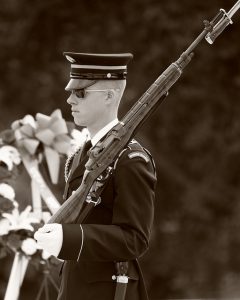Study Shows Brain Injury Due To Blasts
A study published in the journal Lancet Neurology can help explain how blasts cause brain injury among veterans.

Veterans suffer from physical scarring in the brain after blast exposure. The damage is very much real. (Flickr / Creative Commons / Shawn Clover)
Although some symptoms are thought to be psychological, this new study finds that they can be a result of physical damage. The symptoms include difficulty concentrating, headaches, depression, memory problems and sleeplessness. They are often linked to the psychiatric post-traumatic stress disorder (PTSD). But this study shows that the symptoms are related to physical blasts that cause brain injury.
This calls for a reevaluation of mental health care for veterans. Sometimes people are discharged because of malingering, or feigning symptoms for secondary gain. This offers a fresh perspective on these symptoms.
The Uniformed Services University of the Health Sciences (USU) in Maryland researchers autopsied numerous brains of veterans that experienced blasts in combat. The researchers found a distinct pattern of brain scarring, astroglial scarring at junctions between brain parenchyma (functional tissue) and fluids, and at junctions between grey and white matter, which gives rise to the theory that physical brain injury was caused by the blasts. The scarring indicated physical damage from blasts consistent with the general principles of blast biophysics. The scarring could account for the neuropsychiatric clinical sequelae experienced.
Some of the veterans died due to drug overdoses and suicide, and others were killed by their brain injuries. There was less scarring in people who suffered a brain injury just days before dying, suggesting that brain scarring may worsen over time. The scarring patterns were unique. They were different than civilians who sustained traumatic brain injuries or from those who suffered damage from automobile accidents or sports incidents. Civilian cases did not show astroglial scarring in the specified brain areas.
The study’s lead author was Dr. Daniel Perl, director of the Center for Neuroscience and Regenerative Medicine Neuropathology Core. He told NBC News that the scarring pattern was evidence of the brain attempting to heal itself. The researchers are now hoping to find new ways to help veterans with brain injuries who are still alive.
There have been 347,962 servicemen diagnosed with traumatic brain injury since 2000. This research has the potential to open up different pathways of more research to help these people and more in the future. It leads to questions about how the military can protect themselves from blasts and whether or not the brain can heal.
The study was funded by the Defense Health Program of the United States Department of Defense.